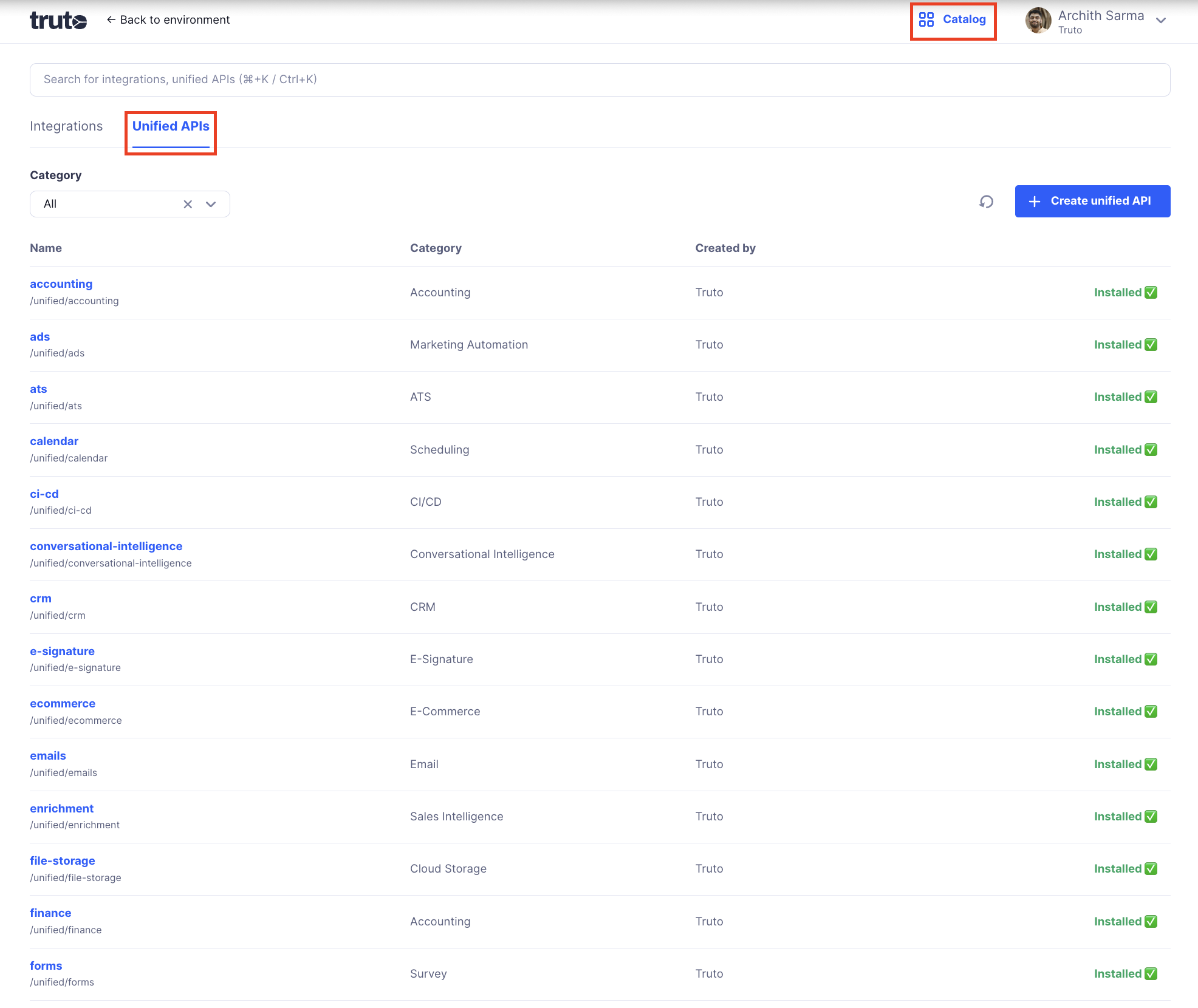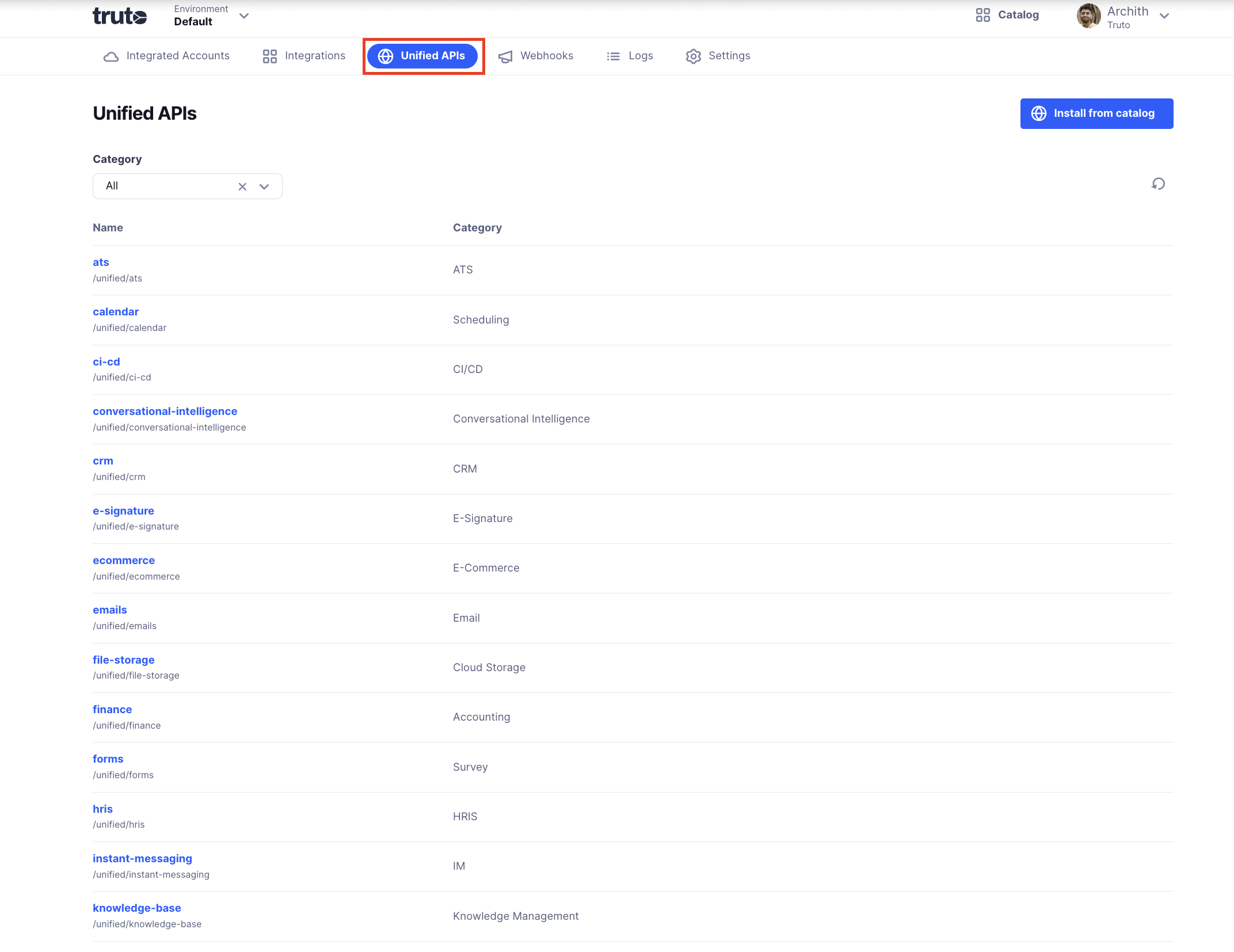Overview
In this section, we’ll walk you through how to set up and install Unified APIs in your environment, complete with screenshots to guide you every step of the way.
Available Unified APIs
In Truto, 'Available Unified APIs' refers to a collection of Unified APIs, ready for installation and use. They are classified into different categories such as CRM, E-commerce, Ticketing, etc.
Installing a Unified API
To access and install these APIs you can click here or follow these steps:
- Sign in to your Truto account.
- Navigate to the Catalog section. It has two tabs, one for
Integrationsand one forUnified APIs.
- Click on the
Unified APIs - Find and click on the
Installbutton next to the API you wish to use.
Now, the chosen Unified API is installed and ready for use in your environment.
Custom Unified APIs
If a specific Unified API you need is not currently available, Truto offers the capability to create custom APIs. Let us know your specific requirements, and we'll create it for you.
Viewing the resources, schema and mappings for a Unified API
In Truto, each Unified API comes with 'resources', 'schema', and 'mappings':
- Resources: These are the specific data endpoints available within a Unified API.
- Schema: This outlines the structure and type of data provided by the resources.
- Mappings: These show how data from the underlying API is transformed into the structure defined by the Unified API schema.
View Resources, Schema, and Mappings
To explore these elements for a Unified API, follow these steps:
Sign in to your Truto account.
Navigate to the
Unified APIssection inCatalogorInstalledsections.
Locate the
Resourcessection. This lists all data endpoints for the selected Unified API.
Click on any listed resource to view its schema and mapping.
The mapping section will display the transformation logic used to convert data from the underlying API into the format defined by the Unified API's schema.
The Role of Mappings
Within the mappings, there's a drop-down list showcasing which integrations support the particular resource mapping. This helps in understanding how data from different underlying APIs can be standardized into the Unified API format.
To Summarize
Unified APIs in Truto are like multi-lingual interpreters that translate and simplify data from different sources, making your work with APIs faster, cheaper, more efficient, and much more straightforward.

